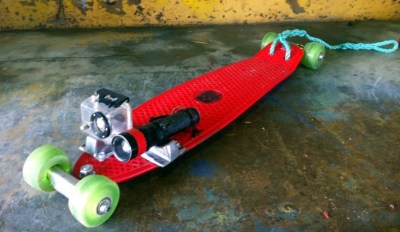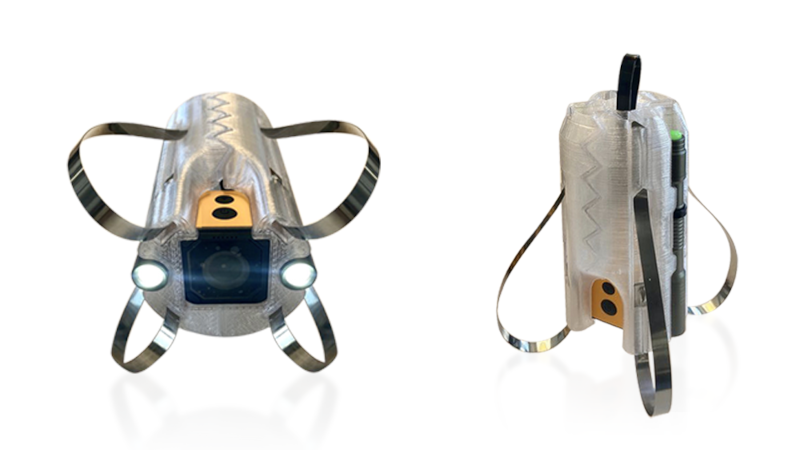Much of mining involves digging and drilling holes in the ground. Often, these holes need inspecting, but [Dean Harty] found that existing borehole inspection solutions weren’t up to snuff. Resolution was poor, and often live-view devices made recording footage a pain. Instead, he set about the development of the Sneaky Peaky, going through several revisions in the process.
The first revision was nothing more than a GoPro strapped to a small penny board, paired with a bright flashlight. The 4K resolution of the GoPro provided useful footage, and the assembly could be lowered into boreholes on a rope and retrieved easily. Rugged and water resistant, the gear worked well, and was remarkably cheap compared to more obscure mining industry hardware.

Later revisions ditched the skateboard, replacing it with a pipe-style housing instead. Key to the design was that the device could readily be destroyed and flushed out of a borehole with an air blast in the event it got stuck.
Eventually, mining outfit Metrologi got involved, having worked with [Dean] on several borehole backfill operations. A 3D-printed chassis was developed to hold an action camera and twin torches, held together with plastic zip ties. These are attached to the pull rope, and if the camera becomes jammed, a sharp pull will snap the ties and cause the device to fall apart. Steel cable ties are then used to create flexible guides to center the assembly in a variety of pipe diameters.
It’s a great example of people on the ground hacking together the tools they need, combined with iterative design to integrate improvements over time. We don’t talk about boreholes much around here, but they can be musical if properly employed, as it turns out. If you’ve got your own great mining hacks, however, do drop us a line!
















I remember times when we were milling brass(SS in protoypes) “hulls” for company making pipe inspection crawlers.
Owner of said business was A. Sirko(really nice and smart guy), sorda local V. Antonic(he also designed 8bit diy home computer in eighties – Cobra 1).
Voja is a member of the Hackaday staff, believe it or not. :)
The „more obscure mining industry hardware“ is certified to be used in an explosive athmosphere. That is why it‘s more expensive than a flashlight and a gopro on a skateboard.
Shouldn’t it be Sneaky “Peeky” since you’re taking peeks in a hole?
Worst. colonoscopy. ever.
I can’t tell from the photos just how big the final version is. Do any of you know?
Yep, 150mm long, 70mm diameter. These pull through cameras are used to inspect backfill lines on underground mine sites. Cement is batched up on the surface and pumped underground to fill the voids left with the ore is removed. Cement falling at terminal velocity is pretty abrasive on the pipes and due to the costs to replace these lines, operators like to keep tabs on the inner surfaces of the pipe. There are “live feed” and 3d scanning systems available but they come with complexity and cost. I know of a life feed scanning system getting jammed in such an application and ending in a total loss. The point of this idea is so the operator can get any labourer without any risk to quickly pull the camera up the line whenever there is a shut in batching etc. If the video shows an area of concern, then further surveys using other equipment can be made. I plan to make this concept open source.
Application: Oak Island!
My first thought was Oak Island too.
I need something like this for 100 mm (4 inch) drain pipes with bends and a live view – since the pipes are underground and the camera is likely to be submerged (rain water), I’d be interested to know if there are action cams that could be wired – are there?
Of course any ethernet / IP cam could be used, or even a raspberry pi camera and a suitable case and cable. It would need a battery with HDMI or PoE unless you can combine the cables (for water-proofing).